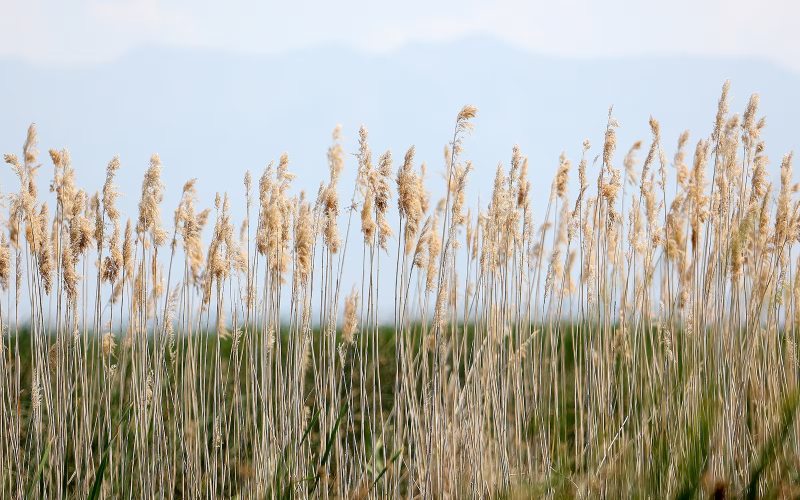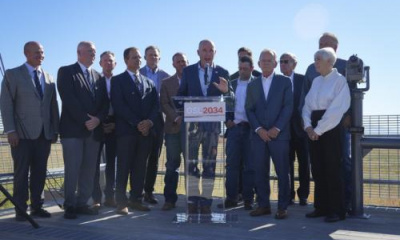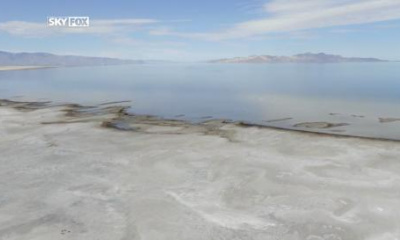Hungry bovines chomp on aggressive water-hungry reed, helping environment.
Caretakers of the land around the Great Salt Lake, at wildlife management areas and Utah Lake over the years have used a variety of tools to stamp out the invasive, harmful phragmites — a tall reed that outcompetes natural vegetation and gobbles up precious water.
The Nature Conservancy has turned to a four-legged foe to assist its efforts, deploying cattle on its Great Salt Lake Shorelands Preserve in western Davis County.
Each summer, the nonprofit organization unleashes its cows — as well as those of partners — to feast on the reeds. The grazing not only removes plant biomass but also provides other benefits, including breaking up dead plant material through trampling, stressing the phragmites through grazing, and increasing biodiversity.

Phragmites, an invasive perennial grass, is pictured growing in the Great Salt Lake Shorelands in Davis County on Tuesday, July 16, 2024. Cattle can be used to graze and eat the phragmites, allowing native vegetation that requires less water to return, leaving more water for the Great Salt Lake. | Kristin Murphy, Deseret News
The clearing of the invasive plant helps to make room for vital native vegetation for birds and other wildlife that make the wetlands and the uplands their home along the shores of the Great Salt Lake.
“The biggest benefit for us is that it is cheap labor,” said Chris Brown, Utah stewardship director for The Nature Conservancy.
“We either have to spray it or mechanically mow it and that takes a lot of time, man hours and it is expensive. With the cows, we can just throw them in there and let them do their dirty work.”
Brown said the cows help to keep the weed in check by preventing much of its expansion, such as going to seed.
And, he added, it is a tasty, healthy forage for them.
“They love it and it has about the same amount of protein as alfalfa,” he said.
The conservancy uses about 450 head of cattle at the preserve.
In addition to that targeted area, The Nature Conservancy has used cattle in central Utah, where cows helped bring back the native Utah autumn buttercup by creating more space for seeds to grow. The flower is endemic to Garfield County. In 1989, The Nature Conservancy purchased 44 acres encompassing the last known location of the buttercup, which grows to about 2 feet tall.
At the conservancy’s Canyonlands Research Center, an experiment with a different breed of cattle, the Criollo, shows promise of being less of a threat to native vegetation because of their unique diet.
In another example of using cows as a vegetation tool, the city of Boulder, Colorado, relies on local ranchers targeting open space south of the National Center for Atmospheric Research.
According to the city, the cattle eat tall oat grass, a highly invasive weed that takes over native vegetation, presents a fire risk and compromises animal species such as wild turkey, mule deer and grassland birds.









